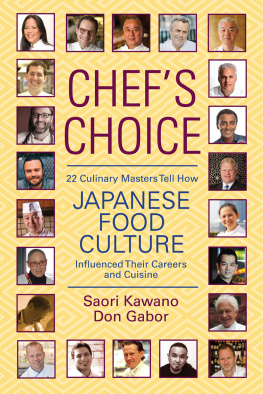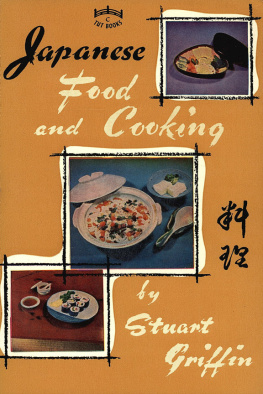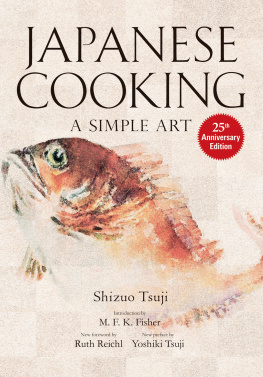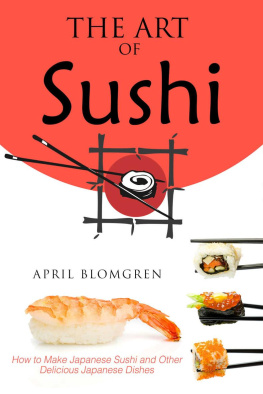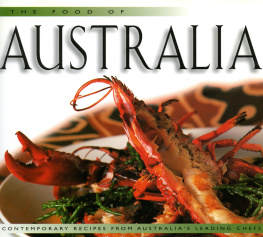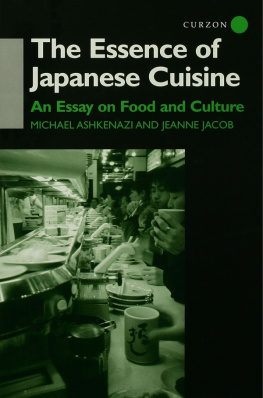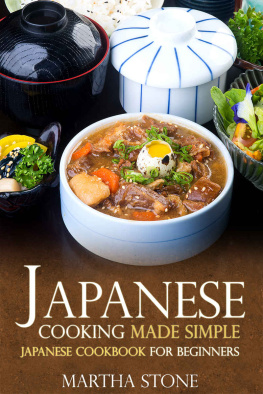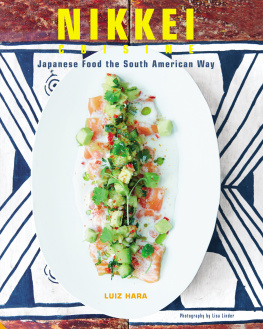
Copyright 2015 by Saori Kawano
All rights reserved. No part of this publication may be reproduced, distributed or transmitted in any form or by any means, without prior written permission.
Conversation Arts Media
P.O. Box 715
Brooklyn, NY, 11215
www.dongabor.com
www.chefschoicethebook.com
Cover Design Hilary Zarycky
Book Layout 2014 BookDesignTemplate.com
Book Title/Chefs Choice: 22 Culinary Masters Tell How Japanese Food Culture Influenced Their Careers and Cuisine / Kawano, Saori & Gabor, Don 1st ed.
ISBN 978-1-879834-27-9
Acknowledgements
We want to thank all the participating chefs for their enduring support of this book project. We are honored that many of these chefs are members of The Gohan Societys Board of Directors, Culinary Advisory Board, or Advisory Committee.
We want to express our deepest gratitude to Eileen Cowell for providing editorial polish, clarity, and for her generous help in making this book a reality.
We also thank the following people for their assistance: Yoshiki Tsuji, Motoatsu Sakurai, Mari Sugai, Hilary Zarycky, Jeanine Caunt, Nancy Dugan, Erica Caridio, Brandon Saracco, and Daniel Carman.
In the modern field of gastronomy, mastering Japanese cuisine is more than acquiring the fundamental cooking skills. It also requires a deeper understanding of the historical background of Japanese food culture.
Yoshiki Tsuji, President of the TSUJI Culinary Institute in Osaka, Japan

CONTENTS
Author, culinary educator, leading English-language expert on Japanese cuisine, and resident of Japan for more than four decades explains how she first learned about washoku cuisine from the woman who would become her mother-in-law.
Executive Chef at Gramercy Tavern, New York City, and winner of the James Beard Foundations Best Chef in New York City, 2012, talks about his career path from a small Japanese restaurant in Tokyo to Paris and then to Gramercy Tavern.
Executive Owner/Chef of Bouley and Brushstroke, New York City, shares how he and Japanese agricultural experts from Kyoto brought artisanal ingredients to his kaiseki-inspired New York City restaurants.
Founder of wd~50 and Owner/Chef of Alder in New York City, describes how he and his team use Japanese ingredients in non-traditional Japanese ways.
Owner/Chef of Flatts, a Japanese guesthouse and restaurant on the Noto Peninsula, recalls his culinary journey from Sydney, Australia to Noto and reveals the secrets of traditional Noto cuisine he learned from his Japanese in-laws.
Chef de Cuisine at Daniel, New York City, recounts his career path and how he uses Japanese ingredients in the French kitchen.
Owner/Chef of Nobu, and other restaurants worldwide, shares his story of what inspired him to become a restaurateur.
Owner/Chef of restaurants in Southern California and Las Vegas recounts how his first interest in Japan came while working with a Japanese chef at Charlie Trotters in Chicago and how this experience led to his minimalist approach to dish preparation and menu development.
VP of Restaurant Operations for the Samuelsson Group and past VP at The French Culinary Institute says that his early discovery of Japanese food introduced him to the mindset that continues to influence his cooking and restaurant operations.
Executive Chef at Oceana, New York City, describes the cooking experiences that took him through various restaurantsboth good and badto a five-star New York City venue and the challenges he faced along the way.
Chef, Co-owner of Le Bernardin explains his career path and how Japanese ingredients and cooking inspire and influence his French cuisine.
Executive Chef, Mandarin Oriental Hotel, Singapore, explains how cooking potluck dinners while working in an Air Force emergency room led her to managing restaurant and food services at one of New York and Singapores top hotels.
Chef, Co-owner of Union Square Cafe and past director of culinary services for the Union Square Hospitality Group discloses how his fascination with Japanese cuisine began in a spotless kitchen in Tokyo during an international food competition.
Owner/Chef of the Red Rooster and past Executive Chef of Aquavit recalls how the Japanese chefs he met throughout his career influenced him in adapting Asian cuisine and ingredients.
Chef/past-owner of Dvi, New York City, and Consultant describes his first visit to Japan, the new dishes he had the opportunity to enjoy, and the ways they influenced his style of Indian cooking.
Past Executive Chef, LAtelier de Jol Robuchon at the Four Seasons Hotel, New York City, describes how he landed a coveted cooks job in Jol Robuchons Paris test kitchen.
Past Executive Chef, Asiate, Mandarin Oriental, New York, explains similarities between French and Japanese cuisine and recounts what he learned from masters, such as Chef Yutaka Ishinabe (the Iron Chef) and Charlie Trotter.
Owner/Chef of Sushi Zen, New York City, tells about his philosophical approach to cooking and the challenges he faced when opening his restaurant in New York City.
Owner/Chef of Zeniya in Kanazawa Japan describes his career path from working at Kitcho, where he learned the highest culinary skills from Master Chef Tokuoka, to running one of Kanazawas most popular restaurants.
Past Executive Chef at the New York Marriott Marquis, Harrods in London, and other hotel restaurants describes his philosophy of eater-tainment and his quest for unusual Japanese ingredients and cooking methods, which he successfully employs in large venues.
Owner/Chef of The Quilted Giraffe shares how he combined Japanese and American food ingredients, exquisite Japanese dishware, and a tasting menu concept to create unforgettable New York dining experiences in the 1980s.
Independent chef, consultant, and producer of Top Chef reveals the challenges of her diverse career, from coordinating French Culinary Institute cooking events to reaching the semi-finals on Top Chef.
Index
PREFACE by SAORI KAWANO
Food culture in the United States has undergone momentous changes in the past three decades. When I first moved to New York City in 1978, Japanese restaurants were small hole-in-the-wall establishments. They served Americanized Japanese food like chicken teriyaki and shrimp tempura, dishes that satisfied a craving for the exotic while still catering to the western palate. Americans were frightened by the idea of eating raw fish, and most restaurant-goers did not appreciate the subtlety of Japanese cuisine.
In this environment, I watched sandwich-eating elementary school students tease my daughter about the lovingly packed bento boxes she brought to school every day. I felt sorry that my daughter was the object of ridicule because of her traditional Japanese lunches. At the same time, I was disheartened by the American publics lack of understanding and appreciation for Japans proud cuisine and culinary heritage.
At this point, I knew that I wanted to play an active part in transforming Americas food culture and to help bridge this culinary gap between the United States and my home country. In 1982 I rented a small space in downtown New York City and founded Korin to introduce to the hospitality industry the exquisite craftsmanship of Japanese tableware and chef knives.
After nearly 25 years of introducing new and traditional Japanese products to western restaurants and chefs, I wanted to share even more of Japans rich culinary heritage. So in 2005 I founded The Gohan Society, a non-profit organization whose mission is to encourage an understanding and appreciation of Japans culinary heritage in the United States by reaching out to chefs, culinary arts professionals, and people who admire and enjoy Japanese culture.
Next page
